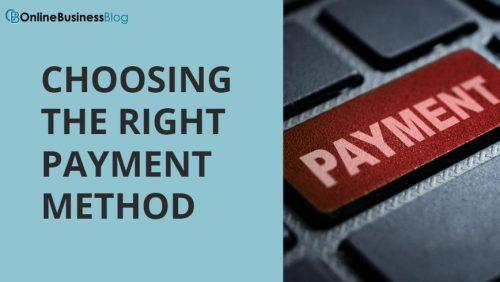Post Contents
There are a few key things you need to do when starting an eCommerce business. First, you need to choose a niche or market to focus on. Once you know what market you want to be in, research the competition and find out what they are doing right and wrong. Next, create a business plan that outlines your goals & how you plan on achieving those. Finally, build a strong foundation for your business by creating great content, designing a user-friendly website, and offering amazing customer service.
How to Start an Ecommerce Business?
Creating the Website
Assuming you already have a product or service to sell, the next step is to get your eCommerce website up and running. This can seem like a daunting task, but we are here to help you.
Here are the key steps you need to take:
Choose your platform
The first step is to decide which platform you want to use to build your website. There are a number of different options available, so it’s important to do some research and find one that best suits your needs. Some popular platforms include WooCommerce, Magento, and Shopify.
Find a domain name and hosting
Once you’ve chosen your platform, you’ll need to find a domain name for your website and set up web hosting. Your domain name should be reflective of your brand and easy for customers to remember. As for hosting, this is where your website will live on the internet so it’s important to choose a reliable provider.
Design your website
Now it’s time to start designing your website! This is where you can really get creative and make sure your site reflects your brand identity. If you’re not confident in your design skills, there are plenty of professional agencies or freelancers who can help out. Once your site looks perfect, it’s time to add content.
Add products or services
If you’re selling products, you’ll need to add high-quality product photos and descriptions. If you’re selling services, you’ll need to write compelling copy that outlines what you offer and why customers should choose you. It’s also a good idea to include testimonials from happy customers to build trust.
Set up payment methods
To take payments online, you’ll need to set up some sort of payment gateway. This will usually involve signing up for an account with a provider like PayPal or Stripe. Once your payment gateway is set up, you can start accepting payments from customers.
Launch your website
Once everything is ready to go, it’s time to launch your website! Make sure to promote your site through social media and other channels to drive traffic and encourage sales. You can also use tools like Google Analytics to track your website’s performance and see how visitors are interacting with your site.
Choosing the Right Payment Method
There are many different payment methods available for online businesses, and choosing the right one can be a challenge. The most important thing to consider is what your customers will be used to pay for their purchases. If you’re selling physical goods, you’ll need to accept credit cards, but if you’re selling digital products or services, you may be able to get away with using PayPal or other online payment processors.

Once you’ve decided which payment methods you want to accept, you’ll need to set up your website to process payments. If you’re using a shopping cart system like Magento or WooCommerce, this will usually involve installing a plugin or extension. Once your website is set up and ready to go, you can start accepting payments from your customers!
Choosing the Right Inventory
When starting an ecommerce business to make money, it’s important to choose the right inventory. There are a few things to consider when making this decision, such as the type of products you want to sell and your target market.
It’s also important to think about how much inventory you need. If you’re just starting out, it’s probably best to keep your inventory levels low so you don’t get overwhelmed. You can always order more inventory as needed.
Finally, make sure you choose a reliable supplier who can provide high-quality products promptly. This will help ensure that your customers are happy with their purchases and that they keep coming back for more.
Choosing the Right Shipping and Return Policy
When choosing a shipping and return policy for your eCommerce business, there are a few things to keep in mind. First, think about what kind of products you are selling and how they need to be shipped. Do you need to ship them quickly? Do they need to be shipped internationally? Second, consider your customers. What kind of shipping and return policy would they prefer? Would they be more likely to buy from you if you offered free shipping? Finally, take into account the cost of shipping and returns. You want to make sure that your policy is profitable for your business.

The most important thing when choosing a shipping and return policy is to make sure that it is aligned with your business goals. Think about what you want to achieve with your policy and choose accordingly. If you are selling high-end products, for example, you might want to offer free shipping or white glove service to encourage sales. On the other hand, if you are selling lower-priced items, you might want to focus on offering a low-cost or flat-rate shipping option. Whatever you decide, make sure that your policy is clear and easy for customers to understand.
Creating Individual Product Pages
When it comes to product pages, there are a few key elements that every page should have. First and foremost, your product pages need to be clear and concise. They should provide all of the relevant information that a potential customer would need to know to make a purchase, such as product descriptions, pricing, shipping information, etc.
Additionally, your product pages should be visually appealing and easy to navigate. This means including high-quality images and helpful multimedia (like videos or 360-degree views) whenever possible. And finally, don’t forget to include calls-to-action (CTAs) throughout your product pages so that visitors know what the next step is – whether it’s adding an item to their cart or signing up for your email list.
Blogging and Social Media Marketing for Your Business
If you are like most people, you probably use social media platforms every day. But did you know that you can use social media to help advertise your business?
Blogging and social media marketing are two of the most effective ways to promote your business online. By creating interesting and engaging content, you can attract new customers and build a loyal following.
Here are a few tips to get started:
- Choose a platform: There are many different blogging and social media platforms to choose from. Find one that best suits your needs and start creating content.
- Be consistent: Once you’ve chosen a platform, be sure to post regularly and interact with your audience often. This will keep people coming back for more.
- Be creative: Use your blog and social media accounts to share interesting information about your business, products, or services. Be sure to include images and videos to make your content more engaging.
- Promote your content: Use keywords and hashtags to help people find your content, and be sure to share it on your other social media accounts. You may also use paid advertising to reach a larger audience.
- Measure your success: Use analytics tools to track your progress and see how people are interacting with your content. This information can help you adjust your strategy and improve your results.
Conclusion
There you have it! Our guide on how to start an eCommerce business to earn money, from choosing a niche to building a website and marketing your products. We hope this has given you the inspiration and confidence to take your first steps in starting your own online store. With a little hard work and dedication, you can make your dream of running your own business a reality.


